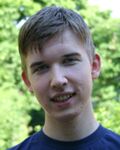Master's degree studies in computer science popular among international applicants
Master's degree programmes in computer science at the University of Helsinki were very popular among international applicants in spring 2010. This academic year the department of computer science at the University of Helsinki decided to offer two of its Master's degree sub-programmes, namely the programme on Algorithms and Machine Learning and the programme on Networking and Services, completely in English from the beginning of Autumn term 2010. It had been observed at the department that many of the Finnish students do not want to continue their studies after completing their Bachelor degree. Therefore, it was thought that making the programmes international would keep the number of Master's degree students high enough to guarantee that the teaching programme at the Master's level would be at least as comprehensive and varied as it is nowadays, and that teaching could be integrated more to the research done at the department. Information on these programmes had apparently reached the target group well, and this spring a record number of applications was sent to these Master's degree programmes as well as for the Finnish-Russian Cross-Border University Master's degree programme in Information and Communication Technology (CBU-ICT) and for the Master's degree programme in Bioinformatics (MBI).
An especially large number of applications were sent for the two Master's degree programmes in computer science. The number of applicants for these programmes was over 270 (over 70% of the applications submitted to different degree programmes at the Faculty of Science). After the first level of processing done by University Admission Finland (UAF), 193 applications were sent to the department for further processing. Of these applications, 140 were directed to the programme on Networking and Services and 53 to the programme on Algorithms and Machine Learning. The numbers of applications for the CBU-ICT and MBI programmes that passed the processing of UAF and were sent to the department were 130 and 68, respectively. This year was the first time that it was possible to send an e-registration for the CBU-ICT programme, which might, at least partly, explain the rise in the number of submitted applications for this programme.
There were no restrictions set in advance for the number of applicants that could be accepted as new students for the two Master's degree programmes in computer science. At the second level of processing of the applications, i.e., student selection, it was checked that the applicants had at least academic-level skills in English and that the applicant's previous degree sufficiently corresponded to the Bachelor degree in computer science awarded by the Faculty of Science at the University of Helsinki. In addition to that, the academic record of the previous degree had to be high enough (at least 80% of the maximum level). Finally, 48 applicants (around 25% of the applicants after the first level of processing) were accepted as new students for the two Master's degree programmes in computer science: 33 students for the programme on Networking and Services and 15 students for the programme on Algorithms and Machine Learning. The majority of the applicants for these programmes were Asians (nearly 75%), and even the majority of the accepted students comes from Asia (67%). 16.7% of the accepted students are women, while their proportion of the applicants was 13.5%.
The number of new students accepted to the CBU-ICT programme, that is a joint Master's degree programme between the University of Helsinki, Lappeenranta University of Technology, the University of Eastern Finland, Petrozavodsk State University and two universities from St. Petersburg, was 10 students this year (7.7% of the applicants after the first level of processing). Similarly to the Master's degree programmes in computer science, the majority of the applicants (nearly 85%) as well as the accepted students (70%) to the CBU-ICT programme came from Asia. The proportion of female applicants for the CBU-ICT programme was, however, 26.2%, and of the accepted students as much as 40%.
MBI, a joint Master's degree programme between the University of Helsinki and Aalto University, in turn, decided to accept 15 new Master's degree students (22% of the applicants after the first level of processing). Five of these new students are Finnish and 10 international students. The proportion of the female applicants for this programme was 32%, whereas the proportion of accepted female students is 40%. And similarly to the other programmes, the majority of applicants (74%) for this programme came from Asia. However, the majority of the accepted MBI students (50%) comes from Europe.
Altogether, we shall have much more international Master's students at our department next autumn. Even though most of the Master's students will be Finnish, this new situation offers possibilities for preservation and development of our teaching programme as well as for gaining experience on studying and teaching in an international environment. At the beginning of August, by which time the accepted students have to submit their notice on study place acceptance, we shall know in detail how many new international Master's degree students will begin their studies at our department, and how international the Master's degree studies and the whole atmosphere at the department will become.
Text: Pirjo Moen, Coordinator of the international Master's degree programmes in computer science


